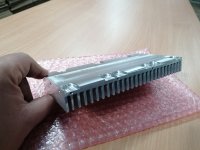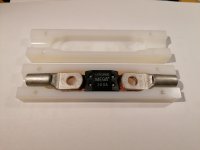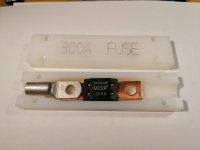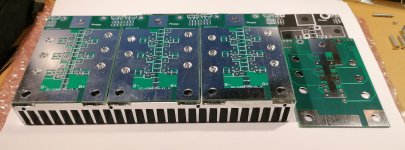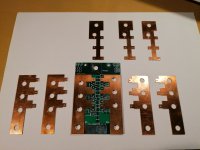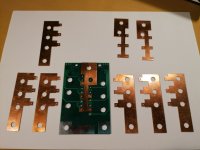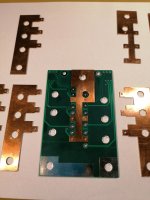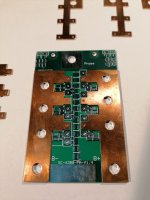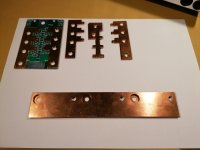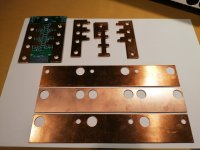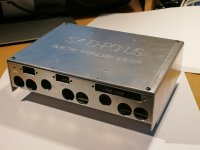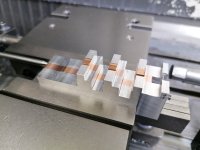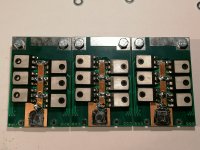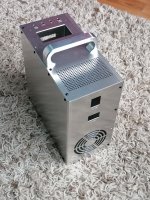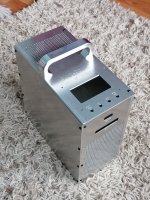I did some testing, all tests ware with motor and no load (prop).
First tests ware at 30v at 1A with Rg 12ohm Cgs 100n and low side snubb R1,1 C4,7n, and the results ware not quite ok, there was some wired oscillation at the end of Ls fet Vds rise time, i made some test at 90V and the ochillations ware way worst (forgot to save the waveforms), so i blamed Cgs, and removed them.
Here is the probing, the Vds had low inductance probing, Vgs din not unfortunatly and as you will see it might had introduced artifacts...
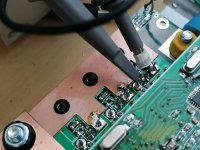
Low side fet rise time
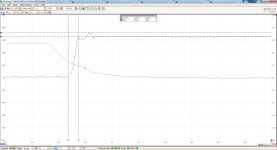
High side fet fall time
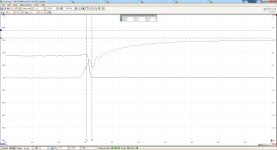
High side fet rise time
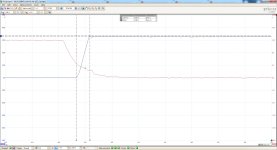
The High side fet-s seem ok.
Test 2 at 30v at 1A with Rg 12ohm Cgs, and snubbers Rmoved, the results ware better, there is some oscillation at Ls fet Vds rise time, but nothing to bad.
Low side fet rise time

Low side fet fall time

Test 3 at 40v at 2A with Rg 12ohm Cgs, and snubbers Rmoved, the results ware even better as Cds drops with increase in voltage, the oscillation amplitude did not increase at Ls fet Vds rise time.
Now the gate presents some oscillations but i believe it is measuring artifacts, because of probing.
Low side fet rise and fall time
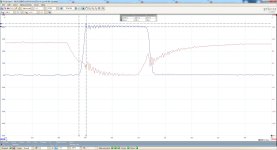
Test 4 at 65v at 3A with Rg 12ohm Cgs, and snubbers Rmoved, the results ware still better as Cds drops with increase in voltage, the oscillation amplitude did not increase at Ls fet Vds rise time.
Low side fet rise time
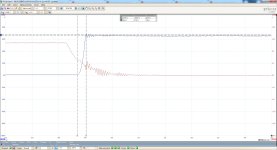
Test 5 at 90v at 8A almots full throttle (~98% ish dutycycle) with Rg 12ohm Cgs, and snubbers Rmoved, the results ware still better as Cds drops with increase in voltage, the oscillation amplitude did not increase at Ls fet Vds rise time.
The gate presents the same funky oscillations at turn on, i think miller because Vgs shuts up as Vds starts to go down and then Vgs goes down as Vds goes down, and this phenomenon is more pronounced as i increases the input voltage throughout the tests, but i might be measuring artifacts, because of probing, and mostly there is nothing on Vds fall time to reflect what happens on gate....at least that is what i think...
Low side fet rise and fall time
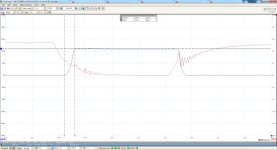
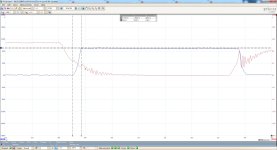
Low side fet rise time

Low side fet fall time
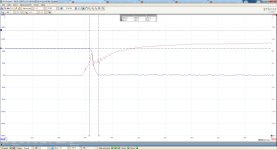
Here is the log from controller showing the max voltage and current on test 5

All in all it performed well it spun the motor to 3200rpm, stayed cool, all waveforms ware consistent there ware no wired pulses and spikes like on V1.3 tests, so so far so good.
Next month i'l get a new scope (100Mhz BW), with my picoscope, i'm way over its BW and samplerate limits now, i'l redo the 90V no load tests with the new scope, and report back, until then please comment on what you think i presented here.
